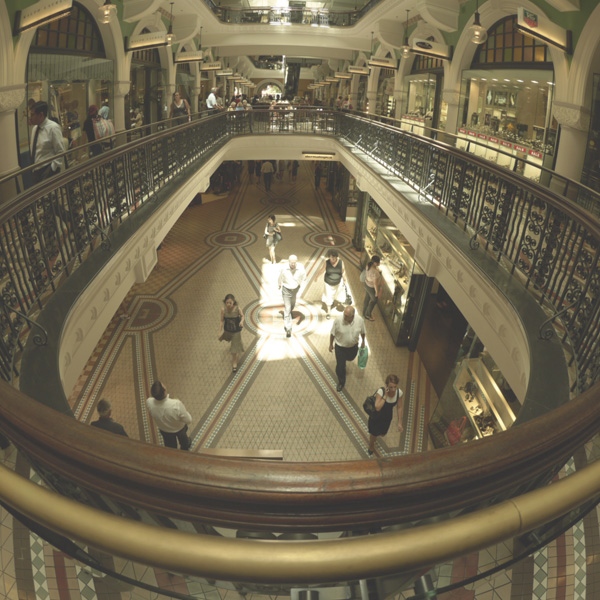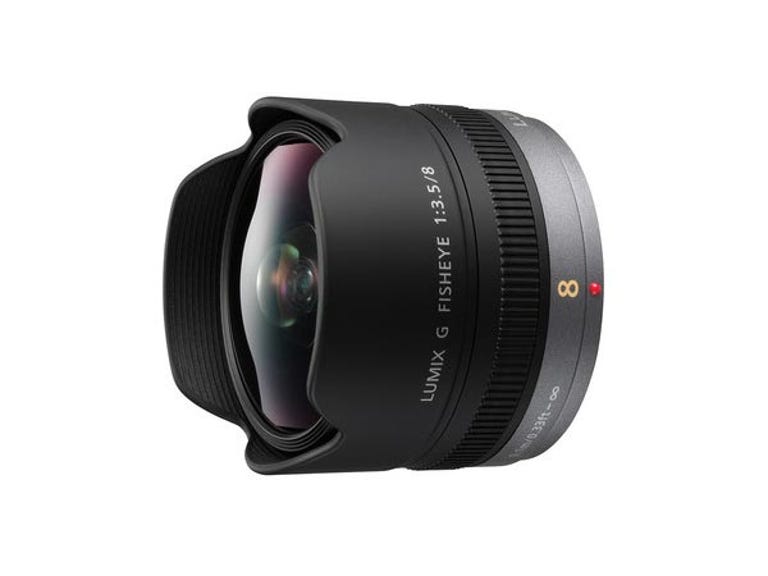 Why You Can Trust CNET
Why You Can Trust CNET Panasonic Lumix G Fisheye 8mm f/3.5 review: Panasonic Lumix G Fisheye 8mm f/3.5
Given the limited applications for a fish-eye lens and the expensive list price, we can't help but wonder how many of these units Panasonic will sell. If you want to shoot real fish-eye and Micro Four Thirds is your system of choice, the 8mm is the best (but most expensive) option.
Design and features
The 8mm fish-eye is designed for Micro Four Thirds cameras and will work on Panasonic or Olympus models. We tested it on the Lumix GF2 and found it was a perfect size for the footprint. It's just 165 grams which makes it an ideal partner to the light cameras, and offers a true fish-eye effect with a 180-degree field of view. The 8mm distorts the scene so much that the only portion of the final image that will appear relatively normal is right in the centre.
The Good
The Bad
The Bottom Line
The plastic exterior construction matches the look and feel of the GF2 well, but we can't help wishing that there was a little more metal in it after having recently experienced the luxury of the 25mm Voigtlander f/0.95. Apart from a manual focusing ring there's nothing else adjustable on the lens itself — given that this is a dedicated Micro Four Thirds lens with electrical contacts, it means all adjustments are made from the camera.

An example of one of the colour modes on the GF2 called retro, taken with the 8mm lens. (Credit: CBSi)
With a built-in lens hood (not removable) shielding the front element from stray light, the lens measures 52mm in height. Its maximum aperture is f/3.5, stopping all the way down to f/22. Included in the box is a lens cap that sits over the hood, and a rear lens cap.
At the time of writing this is the only true Micro Four Thirds fish-eye lens available — the other options are the Olympus 9-18mm, which is really a wide-angle lens and does not produce the same effect, or the Olympus fish-eye converter, which is only compatible with the 14-42mm Olympus lens.
Image quality
As this is such a specialist lens, it's highly unlikely that you'll be strapping it to the front of your camera every day. The 8mm is designed for specific occasions, purposes and looks.
That said, the look it achieves is really quite something — all bulging lines and distorted perspectives. Images are pretty sharp from corner to corner and colour rendition from the lens is also good. Autofocus is quick, responsive and nearly silent. Images produced with the lens cover the entirety of the frame, with no black circle that some fish-eye configurations produce.
Video in particular is a spectacular way to showcase what this lens is capable of, which you can see in the short clip below.
Image samples
Click each image for full-sized samples from the 8mm lens. Images were taken on the Panasonic Lumix GF2. No post-processing has been done to alter these photos.
Conclusion
Given the limited applications for a fish-eye lens and the expensive list price, we can't help but wonder how many of these units Panasonic will sell. If you want to shoot real fish-eye and Micro Four Thirds is your system of choice, the 8mm is the best (but most expensive) option.


